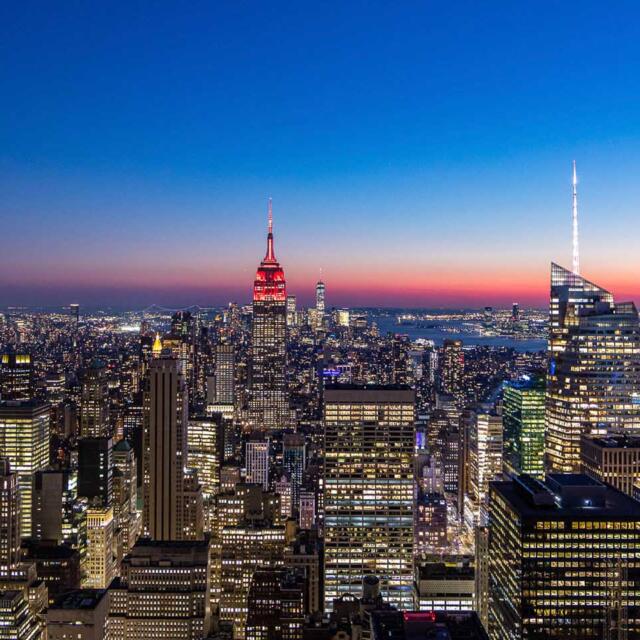
Brooklyn Bridge
A Must See in New York City: The Brooklyn Bridge

Add this and other places to your personal travel plan. We will then help you with further suitable suggestions: free of charge and straightaway!
History of the Brooklyn Bridge
At the beginning of the 19th century, more and more immigrants were arriving in New York to fulfill their dreams of a better life and Manhattan was bursting at its seams. Since living space was limited, people were drawn to Brooklyn on the other side of the East River. This allowed Brooklyn to become America’s third largest city by the end of the 19th century. During this time the East River was used primarily to transport goods and other materials from Brooklyn to Manhattan and served not only as an important economic factor but as vital lifeline. When the East River froze in the winter of 1867, trade came to a standstill and something had to be done! The permits to build a bridge were granted.
You'll also love this:
John August Roebling was made the chief engineer of the Brooklyn Bridge due to his background in bridge engineering. He had immigrated to America with his parents and siblings from Thuringia. He drew the first sketches and designs of the bridge as early as 1857, a time when suspension bridges were still very much an experiment. A few collapses in the 19th century stopped suspension bridges from immediately becoming popular, however Roebling had figured out how to stabilize them. Two factors aided in his particularly with this project; his experience with building smaller suspension bridges in prior years and his expertise in steel. The steel produced in Roebling’s factory was much more flexible and resilient which was vital in the construction of the Brooklyn Bridge. Incredibly, it took 13670 miles of steel wire to braid the main cables.
Roebling’s foresight regarding construction materials for the bridge is still important today. He chose sandstone and granite as construction materials for the pylons and used steel rather than iron, which was commonly used at the time. The advantage of these materials was not only that the bridge could carry a lot more weight, but also that it could better withstand motion and swaying. Had he used iron, the bridge would never have been able to withstand the weight of the cars and trucks (as well as the former streetcars and trains) that use it daily.
 Architects and city planners also profited from the idea to use steel construction: however, as opposed to John August Roebling, who envisioned using it horizontally, they wanted to implement it vertically. The foundation for future skyscrapers had been established!
Architects and city planners also profited from the idea to use steel construction: however, as opposed to John August Roebling, who envisioned using it horizontally, they wanted to implement it vertically. The foundation for future skyscrapers had been established!
Sadly, the Brooklyn Bridge brought a lot of tragedy to the Roebling family. John August died shortly after the start of construction from a tetanus infection. His son, Washington, who took the lead on the project upon his father’s death, suffered decompression sickness after performing diving work for the foundations of the bridge piers and was bound to a wheelchair. His wife, Emily, became the driving force of the project and had the honor of being the first to cross the bridge when it opened.
When the bridge was constructed, it was called East River Bridge. The name it bears today, Brooklyn Bridge, was also not its complete original name, which was actually named New York and Brooklyn Bridge. This was also due to the fact that Brooklyn was not a part of NYC until a referendum was held in 1898. When the bridge opened in 1883 after 14 years of construction, it was the 8th wonder of the world and held the record for longest suspension bridge in the world. It is therefore no surprise that the Brooklyn Bridge is the official landmark of New York City and a historic landmark of the United States.
Our insider tips:
- Visit Brooklyn Heights Promenade. Furman Street is directly across from Manhattan on the East River. Warning: postcard-worthy photo-op!
- If the weather is nice: Relax in Brooklyn Bridge Park, which goes down to the edge of the East River. There you can regain your strength for the walk back. The park is often used for weddings.
You'll also love this:
I'm a true New York fan! Not only have I visited the city over 25 times but also have I spent several months here at a time. On my blog I show you the best and most beautiful spots of the city, so that you have a really good time! You can also find lots of insider tips in our New York travel guide. Also check out my hotel finder for New York!


